The Future of Farming Infrastructure: Smart Technology Integration in Lida Group’s High-Quality Steel Farm Houses.
2025-Aug-26 17:30:30
By Admin
1. Introduction
The global agricultural sector is on the cusp of a technological revolution—one that promises to address the most pressing challenges of our time: a growing population (projected to reach 9.7 billion by 2050), climate change-induced weather volatility, and the need for sustainable resource use. At the heart of this revolution lies the transformation of farming infrastructure. Traditional farm houses—static, labor-intensive, and disconnected from digital systems—can no longer keep pace with the demands of modern agriculture, where precision, efficiency, and resilience are paramount.
Lida Group, a global pioneer in high-quality steel structure design for agricultural use, is redefining the future of farming infrastructure by integrating cutting-edge smart technologies into its durable steel farm houses. Unlike conventional wooden or concrete farm structures that limit technological adoption, Lida Group’s steel farm houses serve as a robust, flexible platform for smart tools—from IoT (Internet of Things) sensors and automated control systems to AI-powered analytics and renewable energy integration. This fusion of rugged steel construction and intelligent technology creates “smart farm hubs” that optimize crop yields, reduce resource waste, and empower farmers to make data-driven decisions.
This article explores how Lida Group’s integration of smart technology into its high-quality steel farm houses is shaping the future of farming infrastructure. It begins by examining the evolving needs of modern agriculture that demand smart infrastructure, then delves into the unique advantages of Lida Group’s steel farm houses as a foundation for technology integration. The article then details the key smart technologies embedded in these structures—including IoT monitoring, automated systems, AI analytics, and renewable energy synergy—before presenting real-world case studies of their impact. Finally, it addresses potential challenges and outlines Lida Group’s vision for the next generation of smart farming infrastructure, concluding with a summary of how these innovations are future-proofing agriculture.
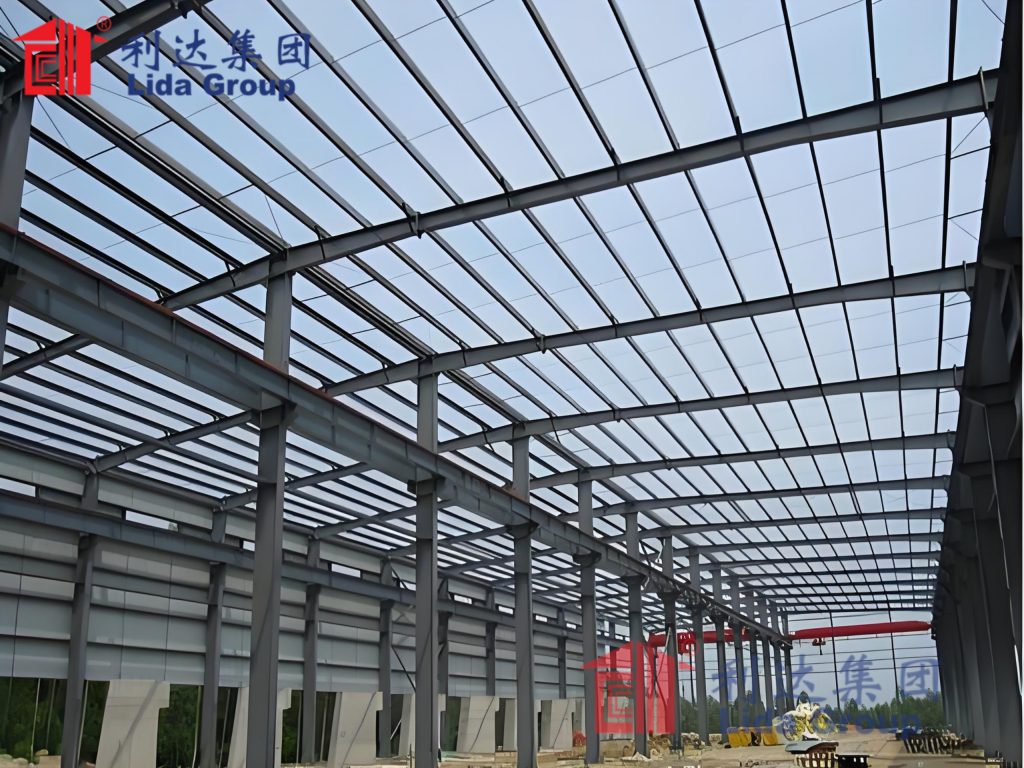
2. The Evolving Needs of Modern Agriculture: Why Smart Infrastructure Matters
To understand the value of Lida Group’s smart steel farm houses, it is first critical to recognize the seismic shifts in agricultural practices that are driving demand for intelligent infrastructure. Modern farming is no longer just about tilling soil and harvesting crops—it is a data-intensive, precision-driven industry that relies on real-time insights and automated systems to thrive. Below are the core needs that smart farming infrastructure must address:
2.1 Precision Agriculture: Moving Beyond “One-Size-Fits-All”
Gone are the days of uniform irrigation, fertilization, and pest control. Precision agriculture—tailoring inputs to the specific needs of individual plants or small crop zones—has become essential for maximizing yields while minimizing waste. For example, a cornfield may have areas with varying soil moisture levels: overwatering dry zones wastes water, while underwatering wet zones stunts growth. Precision agriculture requires:
- Real-time data collection: On-site sensors to monitor soil moisture, nutrient levels, temperature, and crop health.
- Targeted action: Automated systems to adjust irrigation, fertilization, or pest control in specific zones.
- Data storage and analysis: Platforms to store sensor data and identify patterns (e.g., “Zone A requires 20% more water in July”).
Traditional farm houses lack the structural capacity to support these technologies (e.g., mounting sensors, housing control systems) and the connectivity to transmit data. Lida Group’s steel farm houses, by contrast, are engineered to accommodate these tools seamlessly.
2.2 Climate Resilience: Mitigating Extreme Weather Risks
Climate change has amplified the frequency and severity of extreme weather events—droughts, floods, heatwaves, and frost—that devastate crops. Farmers need infrastructure that can:
- Predict risks: Early warning systems for weather events (e.g., a frost alert 48 hours in advance).
- Adapt in real time: Automated adjustments to protect crops (e.g., activating heaters during frost, closing ventilation during heavy rain).
- Withstand damage: Durable structures that shield crops, equipment, and data systems from storms or high winds.
Conventional farm houses often fail on both counts: wooden structures rot in floods or burn in wildfires, and they lack the integration with weather data systems needed for early action. Lida Group’s steel farm houses address this dual need—their robust steel frames resist extreme weather, while embedded smart systems provide predictive and adaptive capabilities.
2.3 Resource Efficiency: Doing More with Less
Water and energy scarcity are global crises that hit agriculture hardest: agriculture accounts for 70% of global freshwater withdrawals, and fossil fuel use for irrigation, machinery, and processing contributes to 14% of global greenhouse gas emissions. Modern farmers need infrastructure that:
- Reduces water waste: Smart irrigation systems that deliver water only when and where it is needed.
- Cuts energy use: Integration with renewable energy (solar, wind) and energy-efficient systems (LED lighting, heat pumps).
- Minimizes chemical use: Precision pest control that targets only infested areas, reducing pesticide application.
Smart infrastructure is the only way to achieve these efficiencies at scale. For example, a smart irrigation system can reduce water use by 30–50% compared to traditional flood irrigation—savings that are critical in arid regions like Australia or the Middle East.
2.4 Labor Productivity: Addressing the Farm Labor Shortage
A global shortage of agricultural labor—exacerbated by aging farming populations and urban migration—has made automation a necessity, not a luxury. In the United States alone, the agricultural sector faces a shortage of 1.2 million workers, according to the American Farm Bureau Federation. Smart infrastructure must:
- Automate repetitive tasks: Planting, watering, weeding, and harvesting can be handled by robots or automated machines.
- Reduce manual monitoring: Sensors and cameras replace manual checks of crop health or equipment status.
- Enable remote management: Farmers can monitor and control operations from anywhere, reducing the need for on-site labor.
Without infrastructure designed to support automation—such as unobstructed spaces for robots or power connections for automated equipment—these labor-saving tools cannot be effectively deployed.

3. Lida Group’s Steel Farm Houses: The Ideal Platform for Smart Technology
Lida Group’s high-quality steel farm houses are not just durable—they are engineered specifically to enable seamless smart technology integration. Their unique design features address the key barriers to adopting smart tools in traditional farm structures, making them the ideal foundation for the future of farming.
3.1 Structural Durability: Protecting Smart Equipment
Smart agricultural technology—sensors, cameras, control panels—represents a significant investment. To deliver a return on investment, this equipment must be protected from environmental damage (rain, dust, pests) and physical wear. Lida Group’s steel farm houses provide this protection through:
- Corrosion-Resistant Steel: All steel components are hot-dip galvanized, creating a zinc barrier that resists rust and degradation for 20–50 years. This protects embedded wiring, sensors, and control systems from moisture damage—critical in humid agricultural environments (e.g., Southeast Asia, Brazil).
- Weatherproof Enclosures: The farm houses’ pre-insulated steel panels are sealed with weatherstripping to prevent water, dust, or pests from entering. Equipment like AI control units or battery storage systems is housed in dedicated, climate-controlled compartments within the steel frame, ensuring reliable performance even in extreme temperatures (-30°C to 50°C).
- Impact Resistance: Steel’s high tensile strength protects against physical damage from farm equipment (e.g., forklifts) or falling debris (e.g., tree branches during storms). This reduces the risk of costly repairs to smart systems.
3.2 Modular and Flexible Design: Adapting to Technological Changes
Smart technology evolves rapidly—today’s cutting-edge sensor may be obsolete in five years. Lida Group’s modular steel design ensures that farm houses can adapt to new technologies without full-scale reconstruction:
- Pre-Installed Utility Channels: Hollow spaces within steel beams and columns (utility channels) house electrical wiring, data cables, and water pipes. These channels are accessible and expandable, allowing farmers to add new sensors or automated systems (e.g., a robotic weeder) without cutting into the steel frame or damaging existing infrastructure.
- Modular Expansion: Steel farm houses are built in modular units (e.g., 10m x 20m) that can be easily added or reconfigured. For example, a farmer who starts with a 500-square-meter smart storage facility can add a 300-square-meter automated processing module two years later—with the new module integrating seamlessly with existing smart systems.
- Weight-Bearing Capacity: Lida Group’s steel frames (made from S355JR and S460NL steel) support heavy smart equipment, such as:
-
- Roof-mounted solar panels (up to 20 kg per square meter).
-
- Overhead robotic arms for crop harvesting.
-
- Large AI-driven climate control units for greenhouses.
3.3 Connectivity: The Backbone of Smart Farming
Smart technology relies on consistent, high-speed connectivity to transmit data between sensors, control systems, and cloud platforms. Lida Group’s steel farm houses are designed to optimize connectivity:
- Integrated Antenna Mounts: Steel roofs and walls include pre-installed mounts for Wi-Fi, LoRa (Long Range), or cellular antennas. These mounts are positioned to maximize signal strength, avoiding the “dead zones” common in concrete or wooden structures (which block radio waves).
- Shielded Wiring: Data cables running through utility channels are shielded to prevent interference from electrical systems (e.g., irrigation pumps), ensuring reliable data transmission.
- Backup Connectivity Ports: For remote areas with poor cellular service, the farm houses include ports for satellite internet dishes—ensuring that smart systems remain connected even in off-grid locations.
3.4 Energy Compatibility: Powering Smart Systems Sustainably
Smart technology requires a steady, reliable power supply—often from renewable sources to align with sustainability goals. Lida Group’s steel farm houses are engineered to integrate with renewable energy systems:
- Solar-Ready Roofs: Steel roofs are reinforced to support solar panel arrays, with pre-drilled mounting points and wiring channels for inverters. A 1,000-square-meter steel roof can accommodate 150–200 solar panels, generating 50–70 kWh of electricity per day—enough to power sensors, automated systems, and even farm equipment.
- Battery Storage Integration: Dedicated compartments within the steel frame house lithium-ion battery storage systems, which store excess solar energy for use during cloudy days or nighttime. The steel structure’s fire-resistant properties provide an extra layer of safety for battery storage.
- Energy Management Compatibility: The farm houses’ electrical systems are designed to work with smart energy management tools (e.g., AI-powered load balancers) that optimize power distribution—prioritizing critical systems like climate control or pest sensors during energy shortages.

4. Key Smart Technologies Integrated into Lida Group’s Steel Farm Houses
Lida Group does not just “allow” smart technology integration—it embeds purpose-built systems into its steel farm houses, creating turnkey smart solutions for farmers. Below are the core smart technologies that define these future-focused structures:
4.1 IoT Sensor Networks: Real-Time Data for Precision Farming
The foundation of any smart farm is data—and Lida Group’s steel farm houses are equipped with a comprehensive IoT sensor network that monitors every critical aspect of agricultural operations. These sensors are seamlessly integrated into the steel structure, ensuring stability and accessibility:
4.1.1 Environmental Sensors
- Air Temperature and Humidity Sensors: Mounted on steel wall panels and roof trusses, these sensors track indoor and outdoor temperature/humidity levels. For greenhouses or crop storage areas, they trigger automated HVAC adjustments (e.g., activating fans if humidity exceeds 85%).
- Light Intensity Sensors: Installed on roofs, these sensors measure sunlight exposure and adjust LED grow lights (in indoor cultivation zones) to maintain optimal photosynthesis levels. For example, if cloud cover reduces natural light by 50%, the system increases LED intensity to compensate.
- Wind and Rain Sensors: Attached to the steel roof’s edge, these sensors provide early warnings of storms. In high winds (over 80 km/h), the system automatically closes ventilation panels to prevent crop damage; in heavy rain, it diverts rainwater to storage tanks via the roof’s drainage system.
4.1.2 Soil and Crop Sensors
- Soil Moisture Sensors: Inserted into the soil in crop zones (with wiring routed through underground steel conduits), these sensors measure water content at different depths (10cm, 30cm, 50cm). Data is transmitted to the central control system, which adjusts drip irrigation to ensure soil moisture stays within crop-specific ranges (e.g., 20–25% for tomatoes).
- Soil Nutrient Sensors: These sensors monitor levels of nitrogen, phosphorus, and potassium (NPK) in the soil. If nitrogen levels drop below optimal (e.g., 200 ppm for corn), the system alerts farmers or triggers automated fertilizer injection via the irrigation system.
- Crop Health Sensors: Camera-based sensors mounted on steel support beams capture high-resolution images of crops. Using computer vision, these sensors detect early signs of stress—such as yellowing leaves (indicating nutrient deficiency) or brown spots (indicating fungal disease)—and send alerts to farmers within hours of detection.
4.1.3 Equipment and Inventory Sensors
- Equipment Status Sensors: Attached to farm machinery (e.g., tractors, irrigation pumps) stored in the steel farm house, these sensors monitor performance metrics like fuel levels, engine temperature, and maintenance needs. If a pump’s pressure drops below normal, the system alerts farmers to potential clogs or mechanical issues.
- Inventory Sensors: For grain or produce storage areas, weight sensors under storage bins measure inventory levels in real time. The system sends alerts when bins are full (to prevent overflow) or low (to trigger reordering), and it tracks inventory turnover to optimize supply chain planning.
4.2 Automated Control Systems: Reducing Labor and Improving Precision
Data from IoT sensors is only valuable if it translates to action—and Lida Group’s steel farm houses include automated control systems that execute tasks without manual intervention. These systems are integrated into the steel frame’s utility channels and powered by the farm’s renewable energy supply:
4.2.1 Irrigation Automation
- Drip Irrigation Controllers: Connected to soil moisture sensors, these controllers adjust water flow to individual crop zones. For example, if sensors in Zone A detect 15% soil moisture (below the 20% threshold for lettuce), the controller opens valves to deliver water to Zone A only—avoiding overwatering other zones.
- Rainwater Harvesting Automation: The steel roof’s rainwater collection system is linked to sensors that monitor tank levels. When tanks reach 90% capacity, the system diverts excess water to secondary storage or releases it slowly into the soil to prevent flooding.
4.2.2 Climate Control Automation
- Greenhouse Climate Systems: For steel farm houses used as greenhouses, automated systems regulate temperature, humidity, and CO₂ levels. If temperature exceeds 30°C (too high for peppers), the system opens roof vents, activates fans, and sprays a fine mist to cool the air. If CO₂ levels drop below 800 ppm (optimal for photosynthesis), it releases CO₂ from a storage tank.
- Cold Storage Control: For farm houses used to store fruits or vegetables, automated refrigeration systems maintain precise temperatures (e.g., 0–4°C for apples). Sensors monitor door openings—if a door is left open for more than 5 minutes, the system sounds an alarm and increases refrigeration power to compensate for heat loss.
4.2.3 Pest Control Automation
- Automated Sprayers: Mounted on steel tracks along the farm house’s ceiling, these sprayers target specific areas identified by crop health sensors. For example, if a sensor detects aphids on a row of strawberries, the sprayer moves to that row and applies a targeted dose of organic pesticide—reducing chemical use by 60% compared to blanket spraying.
- Light Traps with Automated Disposal: UV light traps attract insects (e.g., moths, fruit flies) and include sensors that detect when traps are full. The system then activates a disposal mechanism (e.g., a heated tray) to kill insects and clear the trap—eliminating the need for manual emptying.
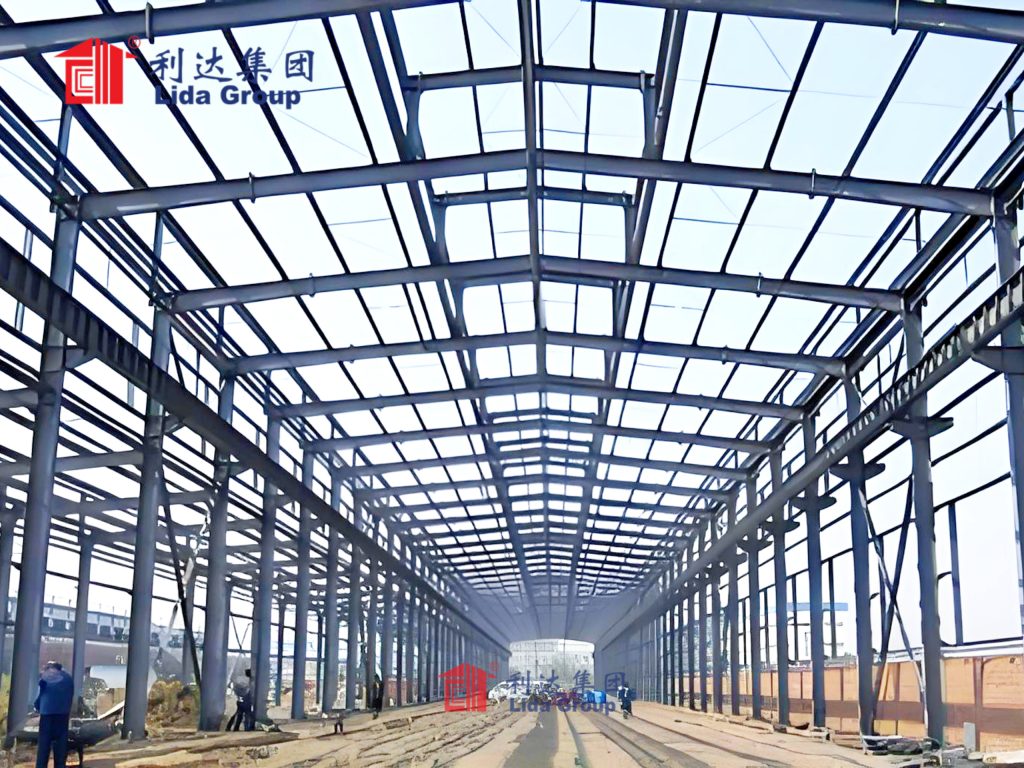
4.3 AI-Powered Analytics: Turning Data into Insights
While automation handles routine tasks, AI-powered analytics help farmers make long-term strategic decisions. Lida Group’s steel farm houses include a central AI hub—housed in a climate-controlled steel compartment—that processes data from IoT sensors and generates actionable insights:
4.3.1 Yield Prediction
- Machine Learning Models: The AI system analyzes historical data (soil conditions, weather patterns, crop health) and real-time sensor data to predict yields. For example, it may forecast a 10% increase in tomato yield if current soil moisture and temperature levels are maintained—or a 5% decrease if a heatwave is predicted. Farmers can use these predictions to adjust marketing plans or secure additional storage.
4.3.2 Resource Optimization
- AI Energy Management: The system optimizes power use by prioritizing critical systems. During cloudy days when solar energy is limited, it reduces power to non-essential systems (e.g., decorative lighting) and allocates energy to irrigation, climate control, and pest sensors.
- Fertilizer Optimization: By analyzing soil nutrient data and crop growth rates, the AI system recommends the exact type and amount of fertilizer needed for each zone. For example, it may suggest applying 2 kg of nitrogen per hectare to Zone B (where sensors detect low levels) and 0 kg to Zone C (where levels are optimal)—reducing fertilizer costs by 30%.
4.3.3 Predictive Maintenance
- Equipment Failure Prediction: The AI system monitors data from equipment sensors (e.g., engine vibration, oil temperature) and identifies patterns that precede failure. For example, if a tractor’s engine vibration increases by 20% (a sign of a worn bearing), the system alerts farmers to schedule maintenance before a breakdown occurs—avoiding costly downtime during harvest.
4.4 Remote Monitoring and Management: Farming from Anywhere
Lida Group’s smart steel farm houses empower farmers to manage operations remotely via a user-friendly mobile app or web platform. This is particularly valuable for farmers with multiple sites or those who need to travel:
4.4.1 Real-Time Dashboards
- Mobile App Dashboards: Farmers can view real-time data from all sensors (e.g., soil moisture levels, inventory counts, equipment status) on their smartphones. The app uses color-coding to highlight issues—red for critical alerts (e.g., a refrigeration failure), yellow for warnings (e.g., low fertilizer), and green for normal conditions.
4.4.2 Remote Control
- Manual Override: While most systems run automatically, farmers can manually adjust settings via the app. For example, if a farmer receives a weather forecast for unexpected frost, they can remotely activate heaters in the greenhouse—even if they are 100 km away.
- Scheduling: Farmers can set schedules for automated tasks. For example, they can program the irrigation system to water crops at 4 AM (when evaporation is low) or schedule the AI system to generate weekly yield reports every Sunday evening.
4.4.3 Cloud Data Storage
- Secure Cloud Platform: All sensor data and AI insights are stored in a secure cloud platform, accessible from any device with an internet connection. Farmers can view historical data (e.g., soil moisture levels from the past year) to identify long-term trends—such as a gradual decrease in soil fertility in Zone D, which may indicate the need for crop rotation.
4.5 Renewable Energy Integration: Powering Smart Systems Sustainably
Smart technology requires consistent power—and Lida Group’s steel farm houses are designed to generate and store renewable energy, reducing reliance on fossil fuels and lowering operational costs:
4.5.1 Solar Energy Systems
- Roof-Mounted Solar Panels: As noted earlier, steel roofs support solar arrays that generate electricity for sensors, automated systems, and even electric farm equipment (e.g., electric forklifts). Excess energy is stored in batteries or sold back to the grid (where net metering is available).
- Solar-Powered Water Pumps: Irrigation pumps are often the largest energy users on farms—so Lida Group integrates solar-powered pumps into its steel farm houses. These pumps draw power directly from solar panels, eliminating the need for grid electricity or diesel fuel.
4.5.2 Wind Energy Compatibility
- Small Wind Turbines: For farms in windy regions (e.g., plains, coastal areas), Lida Group’s steel farm houses include mounts for small wind turbines. The steel frame’s strength supports the turbine’s tower, and the system integrates wind energy with solar power to ensure a steady supply.
4.5.3 Energy Storage Systems
- Lithium-Ion Battery Banks: Housed in fire-resistant steel compartments, these batteries store excess renewable energy for use during periods of low generation (e.g., nighttime, cloudy days). The AI energy management system optimizes battery charging and discharging to maximize lifespan (typically 10–15 years).
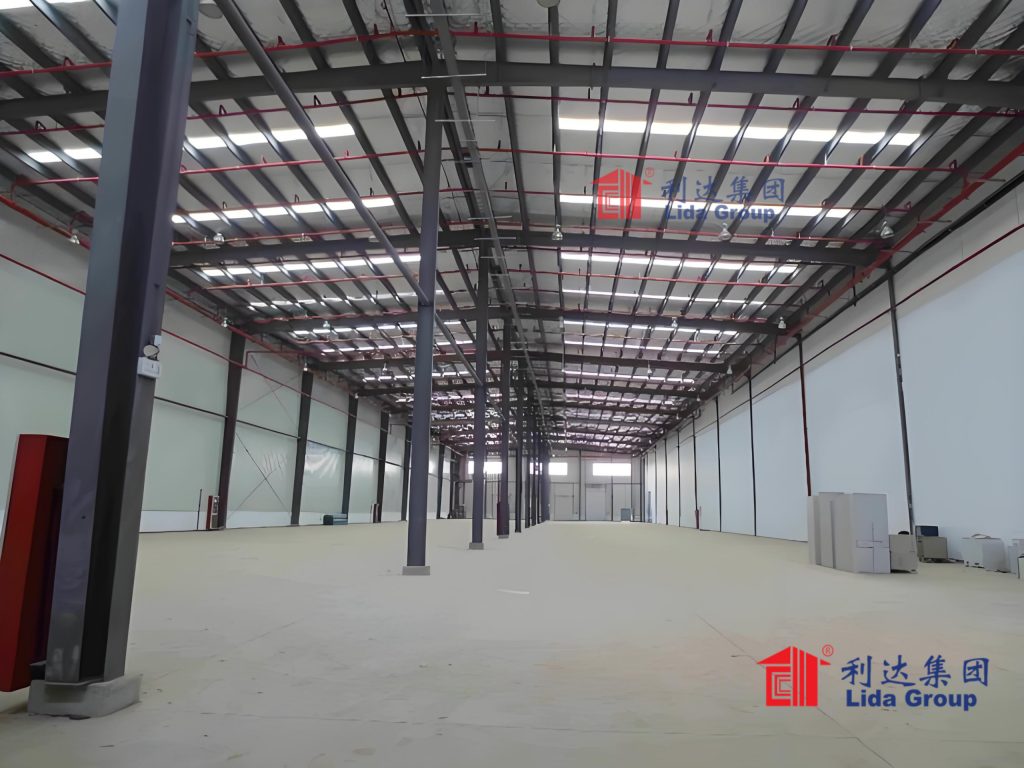
5. Case Studies: Smart Steel Farm Houses in Action
To illustrate the real-world impact of Lida Group’s smart steel farm houses, this section examines three case studies from different regions and agricultural sectors. Each case study highlights the challenges faced by farmers, the smart technology integrated into the steel farm house, and the measurable results achieved.
5.1 Case Study 1: Rice Farm in Thailand
A medium-scale rice farmer in Thailand’s Central Plains faced two key challenges: unpredictable monsoon rains (leading to either flooding or drought) and high labor costs for irrigation and pest control. The farmer needed a solution to stabilize water use, reduce labor, and improve yield consistency.
Lida Group’s Solution:
Lida Group designed a 1,200-square-meter smart steel farm house that served as both a rice storage facility and a control hub for the surrounding 10-hectare rice field. The system included:
- IoT Sensors: Soil moisture sensors (installed in 5 zones across the field), rain sensors (on the steel roof), and crop health cameras (mounted on steel poles).
- Automated Irrigation: A drip irrigation system connected to soil moisture sensors, with valves controlled by the farm house’s AI hub.
- Solar Power: 180 solar panels on the steel roof, generating 60 kWh per day to power sensors, irrigation, and the AI system.
- Remote Monitoring: A mobile app that allowed the farmer to check soil moisture levels and control irrigation from his home.
Results:
- Water Use Reduced by 40%: The automated irrigation system delivered water only when needed—avoiding overwatering during monsoons and ensuring adequate water during droughts.
- Labor Costs Cut by 35%: The farmer no longer needed to hire workers to monitor soil moisture or operate irrigation pumps.
- Yield Consistency Improved: Previously, yields varied by 15–20% year-to-year due to weather; with the smart system, variation dropped to 5%, and average yield increased by 8%.
The farmer commented: “Before, I worried every day about the weather—too much rain and the rice rotted, too little and it died. Now, the smart farm house takes care of irrigation automatically, and I can check everything on my phone. My yields are steady, and I’m saving money on water and labor.”
5.2 Case Study 2: Greenhouse Vegetable Farm in the Netherlands
A commercial greenhouse farmer in the Netherlands specialized in growing tomatoes and peppers but struggled with high energy costs (for heating and lighting) and pest infestations that reduced crop quality. The farmer needed a solution to lower energy use, improve pest control, and increase the premium quality of his produce.
Lida Group’s Solution:
Lida Group delivered a 2,000-square-meter smart steel greenhouse farm house with:
- Climate Control Automation: Sensors for temperature, humidity, and CO₂ levels, connected to automated vents, heaters, and CO₂ injectors.
- LED Grow Light Automation: Light intensity sensors that adjusted LED lights based on natural sunlight—increasing intensity on cloudy days and dimming on sunny days.
- AI-Powered Pest Detection: Camera sensors that identified early signs of pests (e.g., whiteflies) and triggered targeted sprayers.
- Solar-Wind Hybrid Power: 250 solar panels on the steel roof and a small wind turbine, generating 80 kWh per day—covering 70% of the greenhouse’s energy needs.
Results:
- Energy Costs Reduced by 30%: The solar-wind system and LED automation cut electricity and gas use significantly.
- Pest Damage Reduced by 75%: Early detection and targeted spraying eliminated major infestations, improving crop quality.
- Premium Produce Sales Increased by 25%: Higher-quality tomatoes and peppers (with fewer blemishes) fetched a 15% premium in local markets, boosting revenue.
The farmer noted: “Energy and pests were eating into my profits. The smart steel greenhouse changed that— it keeps the climate perfect for my crops, uses less energy, and catches pests before they spread. My customers love the quality, and I’m making more money.”
5.3 Case Study 3: Livestock and Crop Farm in Australia
A mixed-farming operation in Australia’s Outback raised cattle and grew wheat, facing challenges of water scarcity (due to droughts) and the need to monitor both livestock and crops with limited labor. The farmer needed a single smart hub to manage all operations efficiently.
Lida Group’s Solution:
Lida Group designed a 1,500-square-meter multi-functional smart steel farm house that included:
- Livestock Monitoring: GPS collars on cattle that transmitted location and health data (e.g., heart rate) to the farm house’s AI system. Steel-mounted cameras in pastures monitored herd movement.
- Crop Monitoring: Soil moisture and nutrient sensors in wheat fields, connected to automated irrigation.
- Water Management: A rainwater harvesting system on the steel roof (storing 50,000 liters) and AI that prioritized water use—directing water to crops first, then to livestock troughs.
- Remote Management: A web platform that allowed the farmer to track cattle location, crop health, and water levels from anywhere.
Results:
- Water Use Optimized: During a 3-month drought, the AI system allocated water efficiently—crops survived, and cattle had enough to drink, with no losses.
- Livestock Management Improved: The GPS collars helped the farmer find lost cattle quickly (saving 5–10 hours per week) and detect sick cattle early (reducing mortality by 10%).
- Labor Efficiency Doubled: The farmer and his small team (2 people) could manage 500 cattle and 20 hectares of wheat—tasks that previously required 4 people.
The farmer stated: “In the Outback, water and labor are hard to come by. The smart steel farm house lets us do more with less—we save water, find our cattle faster, and don’t need extra workers. It’s like having an extra pair of hands (and a brain) on the farm.”
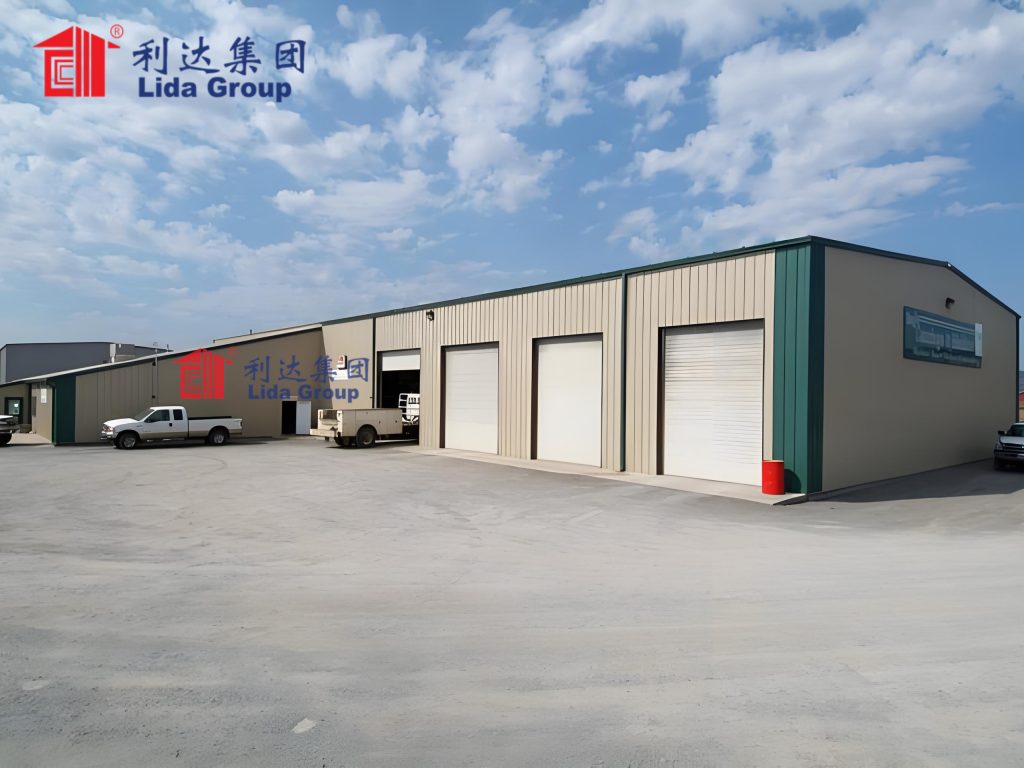
6. Overcoming Challenges: Accessibility, Affordability, and Training
While Lida Group’s smart steel farm houses offer transformative benefits, widespread adoption faces challenges—particularly for smallholder farmers. Lida Group has developed strategies to address these barriers, ensuring that smart farming infrastructure is accessible to all:
6.1 Affordability: Flexible Pricing and Financing
- Modular Upgrades: Farmers do not need to invest in the full smart system upfront. They can start with a basic steel farm house and add IoT sensors or automation later. For example, a smallholder farmer might begin with a 500-square-meter steel storage facility, then add soil moisture sensors and a basic irrigation controller after 6 months.
- Partnerships with Financial Institutions: Lida Group partners with banks and agricultural lenders to offer low-interest loans for smart steel farm houses. Repayment terms are aligned with harvest cycles—farmers pay less during low-yield seasons and more during high-yield seasons.
- Government Grant Compatibility: Lida Group’s systems are designed to qualify for government agricultural technology grants in many countries (e.g., the EU’s Common Agricultural Policy grants, Australia’s Farm Innovation Fund). This reduces the farmer’s out-of-pocket cost by 20–50%.
6.2 Technical Training: Empowering Farmers to Use Smart Systems
- On-Site Training: After installing a smart steel farm house, Lida Group’s technicians provide 2–3 days of on-site training for farmers and their staff. Training covers basic tasks like using the mobile app, troubleshooting sensor issues, and adjusting automated systems.
- Online Tutorials and Support: Lida Group offers a library of video tutorials (in multiple languages) that farmers can access via the mobile app or web platform. The company also provides 24/7 technical support via phone or video call—farmers can connect with a technician to resolve issues in real time.
- Farmer Networks: Lida Group organizes regional workshops where farmers using smart steel farm houses share tips and best practices. These networks build confidence and help farmers learn from peers who have faced similar challenges.
6.3 Data Security: Protecting Farmers’ Critical Information
- End-to-End Encryption: All data transmitted between sensors, the AI hub, and the mobile app is encrypted—preventing unauthorized access. Lida Group uses industry-standard encryption protocols (e.g., AES-256) to protect data.
- Local Data Storage Options: For farmers concerned about cloud data privacy, Lida Group offers local data storage—data is stored on a server in the steel farm house rather than in the cloud. Farmers have full control over who can access the data.
- Regular Security Updates: The AI system and mobile app receive regular security updates to address new threats. Lida Group’s team monitors for vulnerabilities and pushes updates automatically, ensuring that systems remain protected.
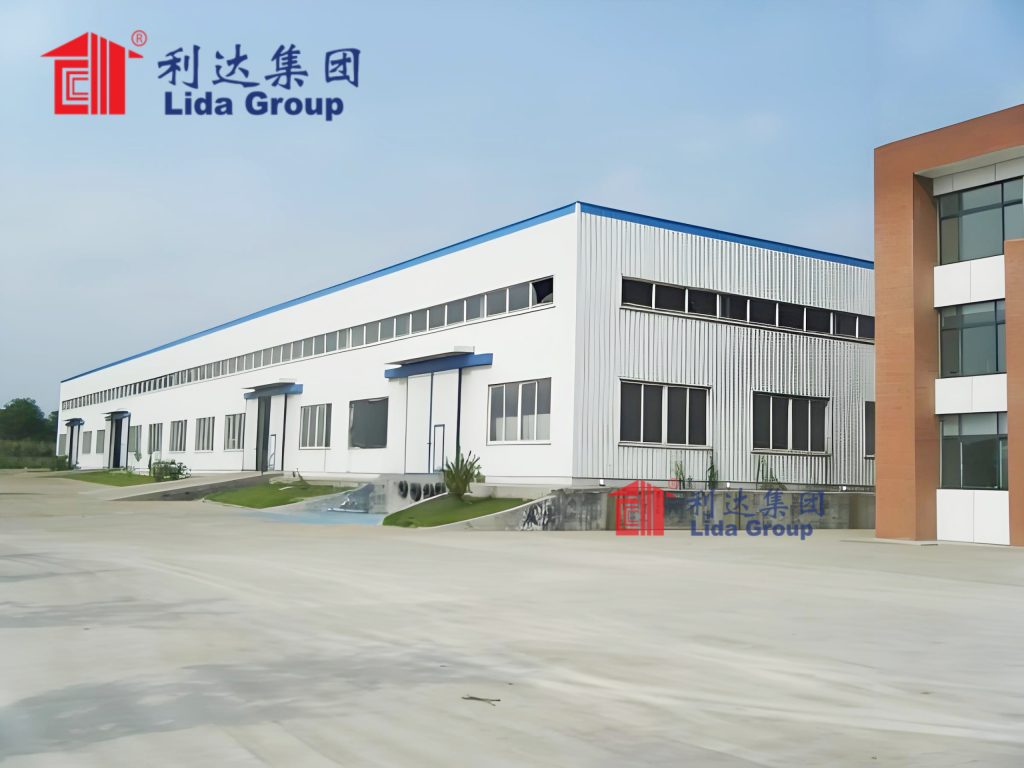
7. The Next Frontier: Lida Group’s Vision for Future Smart Farming Infrastructure
Lida Group is not resting on its current innovations—it is investing in research and development (R&D) to push the boundaries of smart farming infrastructure. The company’s vision for the next 5–10 years focuses on three key areas:
7.1 Hyper-Personalized Farming with AI
Lida Group’s R&D team is developing AI systems that can “learn” the unique needs of individual crops and livestock. For example:
- Crop-Specific AI Models: Instead of generic models for “tomatoes,” the AI will analyze data from thousands of tomato plants to identify sub-variety needs (e.g., “Cherry tomatoes need 5% more water than Beefsteak tomatoes in hot weather”).
- Livestock Health Profiles: The AI will create personalized health profiles for each animal, tracking factors like feed intake, movement, and heart rate to detect early signs of illness (e.g., a drop in feed intake for a specific cow may indicate a digestive issue).
7.2 Interconnected Smart Farms (Farm-to-Farm Networks)
Lida Group is working to create networks of smart steel farm houses that share data and resources. For example:
- Regional Weather Sharing: A farm in northern Thailand that detects an incoming storm can share this data with neighboring farms via the Lida Group network. Neighboring farms’ smart systems can then prepare (e.g., closing greenhouse vents, securing equipment) before the storm arrives.
- Resource Sharing: Farms with excess solar energy can sell it to nearby farms with high energy needs—creating a local “microgrid” of smart farms. This reduces reliance on the national grid and lowers energy costs for all participants.
7.3 Robotics Integration for Full Automation
While current systems automate specific tasks, Lida Group’s future vision includes fully autonomous robots that work seamlessly with smart steel farm houses:
- Autonomous Harvesting Robots: Steel farm houses will include storage and charging stations for robots that harvest crops (e.g., strawberries, lettuce). The AI system will direct robots to harvest ripe crops based on data from crop health sensors.
- Self-Driving Farm Equipment: Tractors and irrigation vehicles will be integrated into the farm’s smart network, using GPS and sensor data to navigate fields without manual control. The steel farm house will serve as a hub for equipment maintenance and charging.
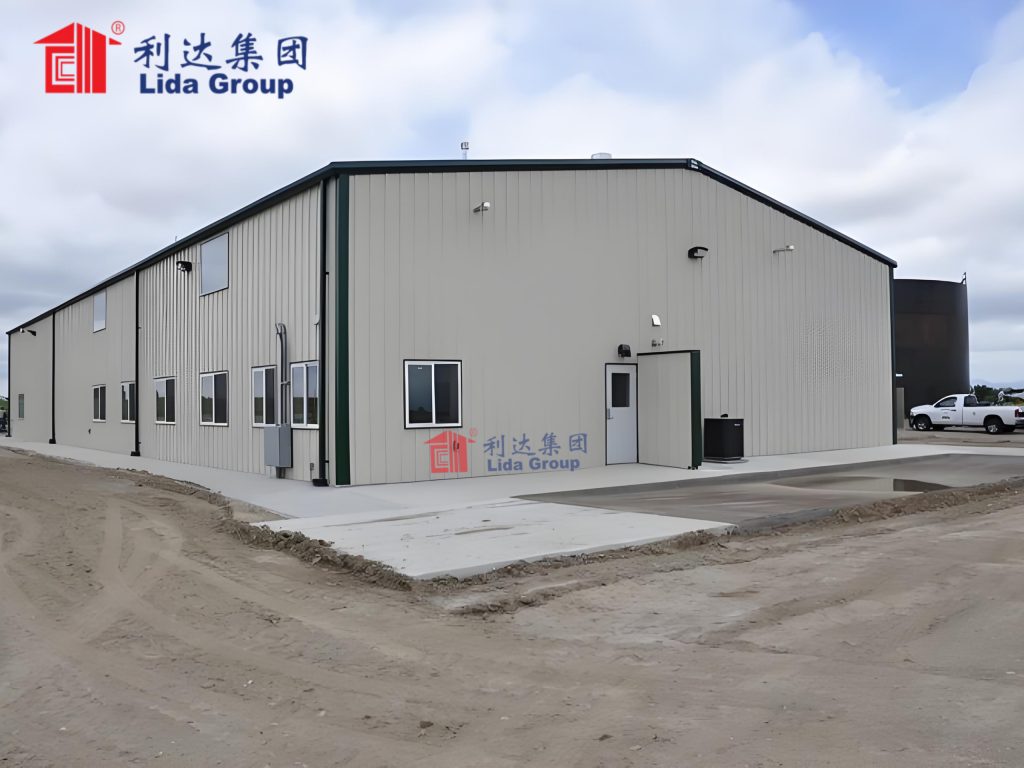
8. Conclusion
In conclusion, Lida Group’s integration of smart technology into its high-quality steel farm houses represents the future of farming infrastructure—a future where durability meets intelligence, and sustainability aligns with productivity. By combining robust steel construction (resistant to extreme weather, flexible for expansion, and compatible with renewable energy) with IoT sensors, automated systems, AI analytics, and remote management tools, Lida Group has created “smart farm hubs” that address the core challenges of modern agriculture: precision, resource efficiency, labor scarcity, and climate resilience.
The case studies from Thailand, the Netherlands, and Australia demonstrate that these smart steel farm houses are not just theoretical—they deliver tangible results: water use reduced by 40%, labor costs cut by 35%, and yield consistency improved by 10–15%. For smallholder and commercial farmers alike, these innovations mean more stable incomes, less environmental impact, and greater resilience in the face of climate change.
Lida Group’s commitment to accessibility—through modular upgrades, financing partnerships, and training—ensures that smart farming infrastructure is not limited to large corporations. Smallholder farmers, who feed a significant portion of the global population, can also benefit from these technologies, closing the gap between small-scale and industrial agriculture.
Looking ahead, Lida Group’s vision for hyper-personalized AI, farm-to-farm networks, and full robotics integration promises to take smart farming to even greater heights. These innovations will not just optimize individual farms—they will create a more connected, efficient, and sustainable agricultural system that can feed the world’s growing population while protecting the planet.
For farmers, agricultural businesses, and policymakers seeking to future-proof agriculture, Lida Group’s smart steel farm houses are more than just buildings—they are a catalyst for change. They represent a shift from reactive, labor-intensive farming to proactive, data-driven farming—a shift that is essential for ensuring food security and sustainability in the decades to come. In the future of farming, smart technology and durable steel will be inseparable—and Lida Group is leading the way.

Related news
-
Cost-Effective Expansion for Agribusiness: Lida Group's Pre-Engineered Steel Farm Houses Reduce Construction Time and Budget.
2025-08-26 17:01:34
-
Lida Group Revolutionizes Storage Capacity with Clear-Span Steel Frame Building Designs for Unobstructed Warehousing.
2025-08-26 17:25:56
-
Engineered for Resilience: Lida Group's Steel Structure Warehouses Withstand Extreme Weather and Heavy Loads.
2025-08-26 15:52:18
contact us
- Tel: +86-532-88966982
- Whatsapp: +86-13793209022
- E-mail: sales@lidajituan.com


